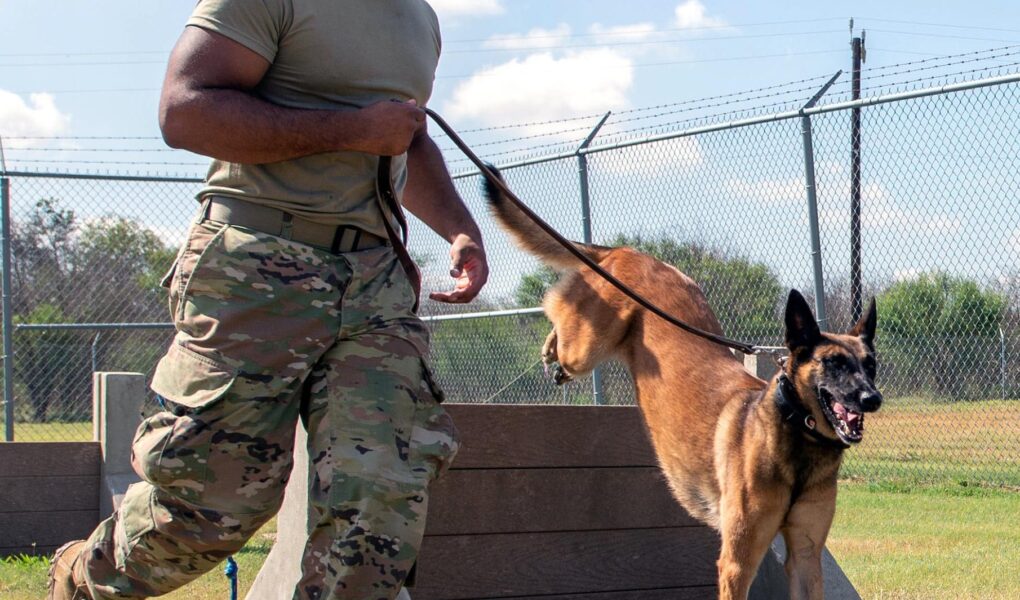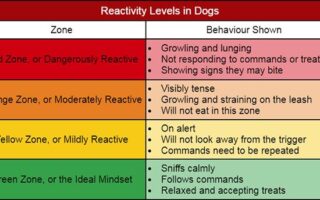In a world where loyalty meets purpose, working dogs emerge as extraordinary companions, tirelessly devoted to tasks that extend far beyond the confines of a home. From guiding the visually impaired through bustling city streets to detecting scents that elude human senses, the capabilities of these canines are nothing short of remarkable. However, the journey from playful puppy to skilled working dog is not just instinctual; it requires thoughtful training, dedication, and an intricate understanding of canine behavior. In this article, we will delve into the art and science of working dog training, exploring the methods, challenges, and triumphs that define this unique bond between human and dog. Whether you’re an aspiring trainer, a seasoned handler, or simply fascinated by the relationship between humans and their four-legged partners, join us as we unpack the techniques that transform raw potential into purposeful performance.
Table of Contents
- Understanding the Foundations of Effective Working Dog Training
- Techniques for Building a Strong Bond Between Trainer and Dog
- Tailoring Training Approaches to Different Working Dog Breeds
- Evaluating Progress and Adjusting Training Methods for Optimal Results
- Q&A
- The Conclusion
Understanding the Foundations of Effective Working Dog Training
Effective training for working dogs hinges on a solid understanding of their natural instincts and behaviors. Emphasizing positive reinforcement is key, as it not only fosters a trustworthy bond between the handler and dog but also enhances the animal’s willingness to engage in tasks. Incorporating various forms of rewards—such as treats, praise, and playtime—can significantly boost motivation. The following elements are crucial for establishing a productive training environment:
- Consistency: Use the same commands and signals to avoid confusion.
- Patience: Allow the dog to learn at its own pace, as progress may vary.
- Clear Communication: Maintain clarity in cues to reinforce understanding.
- Socialization: Expose the dog to different environments, sounds, and people to build confidence.
In addition to these foundational principles, utilizing a structured training plan can facilitate more effective learning. Creating a framework allows for measurable goals and regular assessments of the dog’s progress. Below is a simple table to outline essential training components:
| Training Component | Description | Goal |
|---|---|---|
| Obedience Training | Basic commands such as sit, stay, and come. | Establish control and responsiveness. |
| Task-Specific Training | Training for specific roles like search and rescue. | Enhance skills relevant to a job. |
| Behavior Modification | Curbing unwanted behaviors through training. | Promote good habits for a safe working environment. |
Techniques for Building a Strong Bond Between Trainer and Dog
Establishing a deep connection between you and your dog is essential for effective training. This bond can be cultivated through various techniques that encourage trust and communication. Start by incorporating positive reinforcement into your training sessions. Rewarding your dog with treats, praise, or playtime when they exhibit desired behaviors helps them associate your commands with positive experiences. Additionally, dedicating time for engagement activities such as play sessions, walks, or even casual grooming can significantly strengthen the relationship. Building a routine that includes these interactions fosters a sense of security and attachment in your dog.
Another effective approach is to utilize consistent cues and body language during training. Dogs are incredibly perceptive to their owner’s movements and emotions. Be sure to use distinct verbal commands alongside clear hand signals to enhance comprehension. The creation of a training schedule will not only provide structure for your dog but also allow you to monitor progress over time. Engaging in regular training with varied exercises sustains interest and encourages learning. Here’s a simple reference table to illustrate the various techniques and their benefits:
| Technique | Benefits |
|---|---|
| Positive Reinforcement | Encourages desired behaviors through rewards. |
| Engagement Activities | Strengthens the bond through fun interactions. |
| Consistent Cues | Enhances communication and understanding. |
| Training Schedule | Provides structure and tracks progress. |
Tailoring Training Approaches to Different Working Dog Breeds
Understanding the unique characteristics of various working dog breeds is crucial for effective training. Each breed possesses distinctive traits that influence its training needs and methods. For example, herding breeds such as Border Collies and Australian Shepherds thrive on tasks requiring quick decision-making and agility. They benefit from training programs that emphasize herding simulations and obedience drills to harness their natural instincts. In contrast, scent hounds like Bloodhounds and Beagles, inherent in their nature, require training approaches that leverage their powerful sense of smell. This can involve activities such as scent tracking and search games which provide mental stimulation and fulfill their working instincts.
To tailor training programs effectively, consider the following factors that can impact a dog’s learning experience:
- Temperament: Consider whether the breed is generally more social or independent.
- Energy Level: High-energy breeds may need more physical activity incorporated into training sessions.
- Intelligence: Some working breeds are quicker learners, requiring varied challenges to keep them engaged.
- Drive: Whether it’s prey drive or a strong desire to work, understanding this can shape training focus.
Below is a quick reference table illustrating how different breeds may benefit from specific training approaches:
| Breed | Optimal Training Method | Key Focus Areas |
|---|---|---|
| German Shepherd | Obedience Training | Protection, Agility |
| Labrador Retriever | Retrieval Games | Fetch, Scent Work |
| Rottweiler | Socialization Techniques | Confidence Building |
| Belgian Malinois | Agility Courses | Speed, Coordination |
Evaluating Progress and Adjusting Training Methods for Optimal Results
In the dynamic world of working dog training, regularly measuring progress is paramount. Dog trainers should establish clear, measurable goals before embarking on a training program. This allows for effective tracking of both canine and handler performance. Important metrics may include:
- Response time: The speed at which the dog reacts to commands.
- Accuracy: The correctness of executed commands or tasks.
- Engagement level: The dog’s motivation and enthusiasm during training sessions.
By comparing these metrics over time, trainers can identify patterns that either affirm or challenge their training methods. Should setbacks arise, consider employing new strategies or adjusting existing techniques. Below is a simple table to illustrate potential adjustments based on observed performance:
| Observed Issue | Possible Adjustment |
|---|---|
| Poor response time | Introduce a higher value reward |
| Low accuracy | Break commands into smaller tasks |
| Decreased engagement | Vary training environments |
Q&A
Q&A on Working Dog Training: Unleashing Potential
Q1: What exactly is working dog training?
A1: Working dog training refers to the specialized training that prepares dogs to perform various tasks and roles that assist humans. This can range from guiding the visually impaired, herding livestock, and search and rescue operations, to working alongside police and military personnel. The goal is to enhance the dog’s natural instincts and abilities so they can effectively contribute to their assigned duties.
Q2: How do you choose the right breed for working dog training?
A2: Selecting the right breed is crucial for successful working dog training. Breeds such as German Shepherds, Labrador Retrievers, and Belgian Malinois are commonly favored due to their intelligence, energy levels, and trainability. However, individual temperament and health are also vital; a good working dog should display drive, focus, and an eagerness to learn.
Q3: What are the basic steps involved in training a working dog?
A3: Training a working dog typically follows a structured approach, which includes:
- Socialization – Exposing the dog to various environments, sounds, and people.
- Basic Obedience Training – Teaching commands like sit, stay, and come.
- Skill Development – Focusing on specific tasks relevant to the working role.
- Crisis Scenarios – Practicing real-life simulations to prepare for challenging situations.
- Continuous Reinforcement – Keeping the training engaging with positive reinforcement techniques.
Q4: How long does it take to train a working dog?
A4: The training duration can vary significantly depending on the breed, the specific tasks required, and the individual dog’s ability to learn. Typically, foundational training can take anywhere from several months to a couple of years. Advanced skills, particularly those needed in specialized roles, may require ongoing training throughout the dog’s working life.
Q5: What types of commands should working dogs master?
A5: Working dogs should learn a combination of verbal cues and hand signals that facilitate their tasks. Common commands include:
- “Heel” for proper walking position.
- “Fetch” or “Bring” for retrieving.
- “Search” or ”Track” for finding objects or people.
- “Leave it” to dismiss distractions.
Mastering these commands helps ensure they perform effectively and safely in the field.
Q6: Can working dog training adapt to different environments?
A6: Absolutely! Working dog training is dynamic and can be tailored to various environments. For instance, a search and rescue dog may train in urban settings, forests, or disaster sites, while a herding dog might work in open fields or ranches. The adaptability of training ensures that dogs are prepared for the unique challenges they’ll encounter.
Q7: What role does the handler play in a working dog’s training?
A7: The handler plays a pivotal role in the training process. They must establish a strong bond with their dog, understand the dog’s body language, and provide consistent commands. A handler’s patience, enthusiasm, and ability to read their dog’s needs can significantly enhance training effectiveness, fostering confidence and reliability in the field.
Q8: Are there any common misconceptions about working dog training?
A8: Yes, one common misconception is that working dog training is solely about discipline and obedience. In reality, it’s a blend of structure, socialization, and positive reinforcement. Another myth is that only certain breeds can be working dogs, but with the right motivation and training, many breeds can excel in various roles depending on their abilities and temperament.
Q9: How can someone get involved in working dog training?
A9: Getting involved in working dog training can start as simply as attending local training classes or working with professional trainers. Volunteering with organizations that utilize working dogs, participating in workshops, or even fostering a dog can provide valuable exposure and hands-on experience. Engaging with the wider community through online forums and clubs also opens up resources and insights for aspiring handlers and trainers.
Q10: What are the rewards of working with trained dogs?
A10: The rewards of working with trained dogs are immense. Handlers develop a deep bond and mutual respect with their dogs, witnessing the powerful contributions these animals make to society. Working dogs not only perform vital tasks but also enrich their handlers’ lives with companionship, loyalty, and an unspoken understanding that transcends words.
The Conclusion
As we conclude our exploration of working dog training, it’s clear that the bond between handler and canine is forged through dedication, patience, and understanding. Whether guiding the visually impaired, searching for the lost, or serving as loyal companions in various fields, working dogs demonstrate remarkable resilience and intelligence. Each training session not only enhances their skills but also deepens the relationship built on trust and cooperation.
Embracing the journey of training a working dog, we empower these remarkable animals to fulfill their roles effectively while enriching their lives. As you move forward, remember that every bark, wag, and focused gaze is a testament to the hard work and love that defines this partnership. So, whether you are just starting or are already deep into the training process, may you find joy in the challenges and triumphs ahead, knowing you’re shaping not just a working dog, but a valued ally and friend.



